

Damion Smy
GWM Cannon Alpha ute, Tank 300 HEV and Tank 500 recalled
1 Day Ago
The updated Palisade flagship family SUV from Hyundai offers a luxurious experience with a few annoying traits.
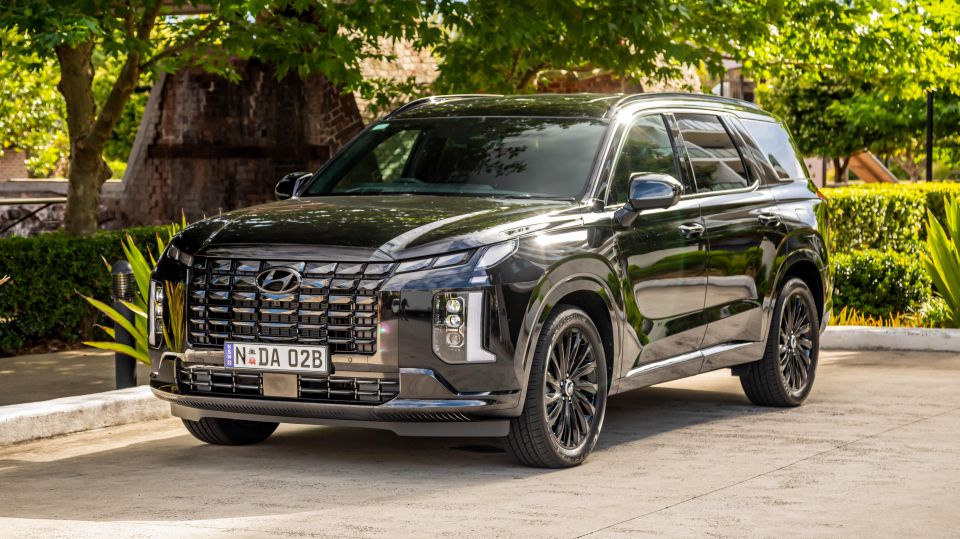


Quickly see how this car stacks up against its competition. Select any benchmark to see more details.
Where expert car reviews meet expert car buying – CarExpert gives you trusted advice, personalised service and real savings on your next new car.
Hyundai Australia has tweaked its Palisade range to follow the naming convention set in other markets, so instead of the Highlander topping the range, there are now two Calligraphy models on offer.

Essentially, the Calligraphy and Calligraphy Black Ink take the place of the outgoing flagship, albeit with the latter adopting a blacked-out exterior finish and different interior trim.
Just like the lower grades, the Black Ink is available with a V6 petrol engine and front-wheel drive, or in 2.2-litre turbo-diesel AWD spec, as tested in this review.
It also persists with the choice of a seven-seat layout with second-row captain’s chairs, or an eight-seat layout with two three-seat benches in the back.
This is a big SUV with big families in mind – and it leaves a big impression too.
So this is the most expensive one ($80,900 plus on-road costs), and for the most part it looks and feels it too.
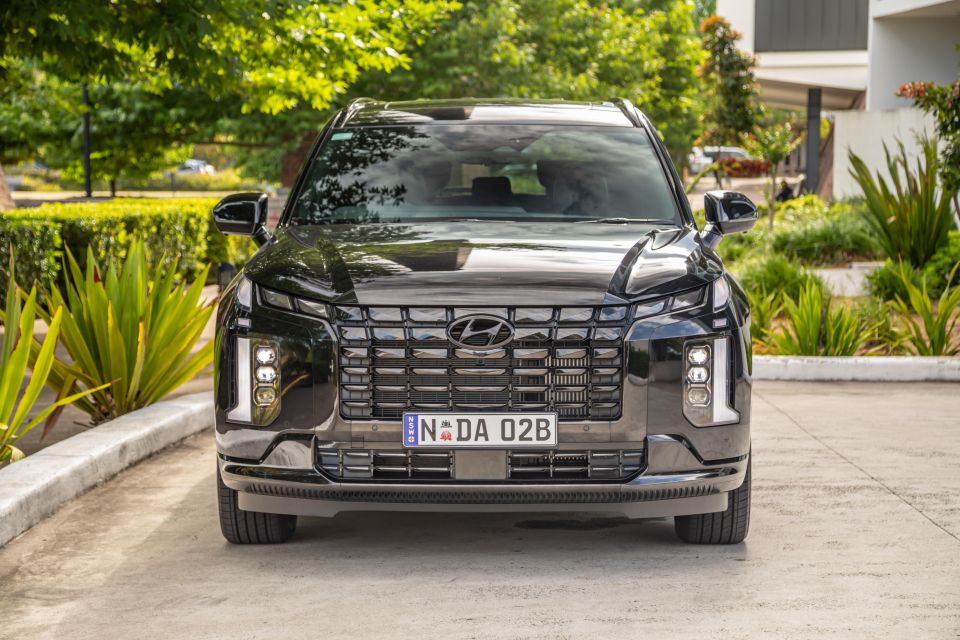
I reckon plenty of buyers will look to swap out those standard 20-inch wheels for a more aggressive looking option, but as is, the Palisade still has a commanding presence. Are you wondering about alternative models with the choice of petrol or diesel, seven or eight seats, and with this level of equipment for this kind of money? Well… sorry, there’s no other SUV like the Palisade in Australia.
However, you might want to consider the brilliant Kia Carnival people-mover, which mightn’t have the SUV profile, but does have a very practical eight-seat body and boot, with sliding doors to avoid car-park-door-dent issues. There’s an update coming, but at the time of writing the Carnival starts from $47,480 to $67,580 plus on-roads. It’s a family bargain by comparison.
If you can deal with seven seats, you’ve got the Mazda CX-90 as a walk-up start. Pricing for it ranges from $74,400 through to a huge $100,935 plus on-road costs, which is another reason the Palisade stands out from a value perspective. Other eight-seat choices include the Land Rover Defender 130 (from $126,670), Nissan Patrol (from $84,900), Nissan Pathfinder (from $71,490), Mercedes-Benz Vito Tourer (from $78,515) and Hyundai Staria (from $49,000).
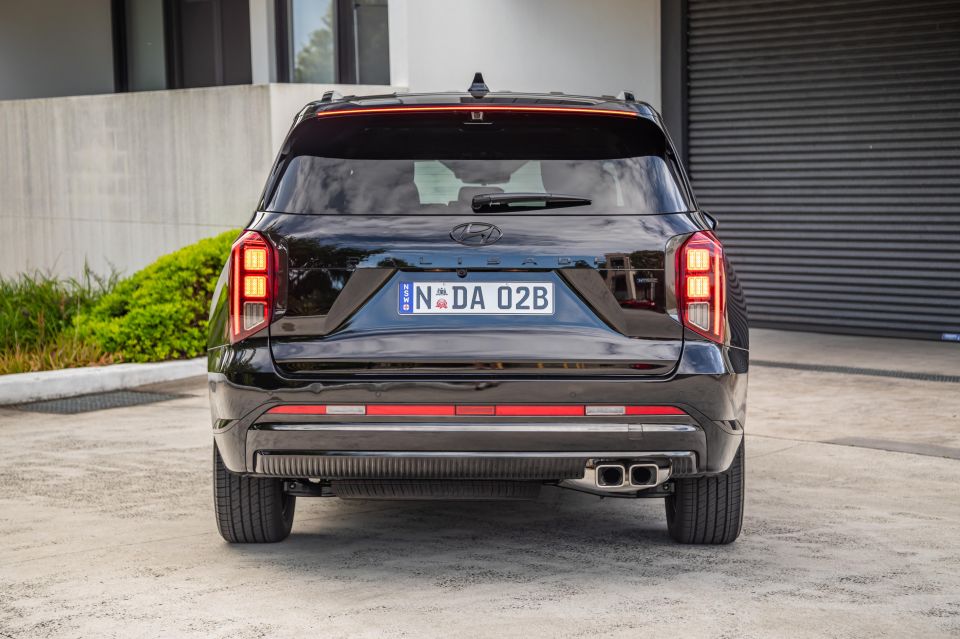
Hyundai Palisade pricing:
Buy your new car without the stress. It's fast, simple and completely free.

Great service from Travis and team, second time I have used this business would not hesitate to recommend them to anyone
Craig C.
Purchased a Ford Ranger in Sunshine Coast, QLD
CarExpert helped Craig save thousands on his Ford Ranger, now let us save you on your next new car.
Find a dealI remember when I bought a pinstripe suit about a decade ago, thinking that it was a good look – it wasn’t, not on me, anyway.
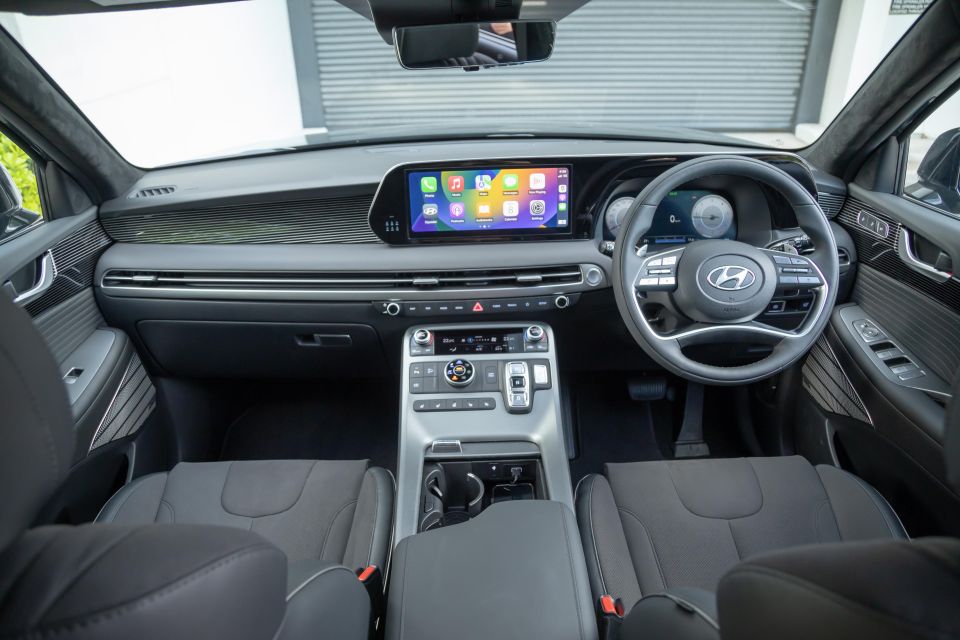
But in this SUV there are pinstripes that sweep from the doors across the dashboard to encompass the cabin and thankfully, the Palisade pulls it off better than I ever could.
Those, in combination with some really lovely materials, make for a high-end feel despite a lower-end price tag for such a large SUV.
There are beautiful finishes on the pillars and the headliner, and even for the covers for the sunroof and the glass roof in the rear.
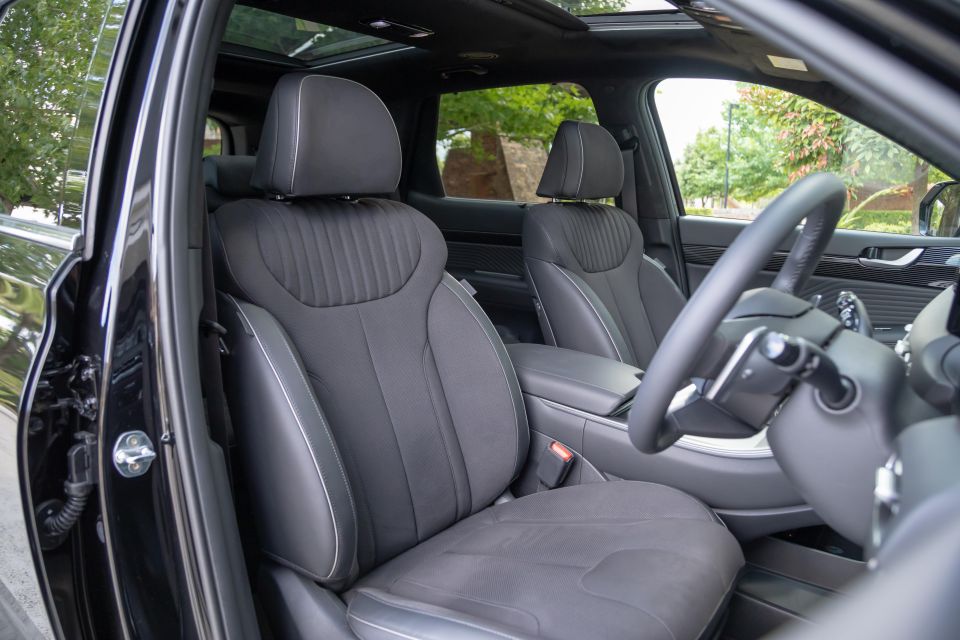
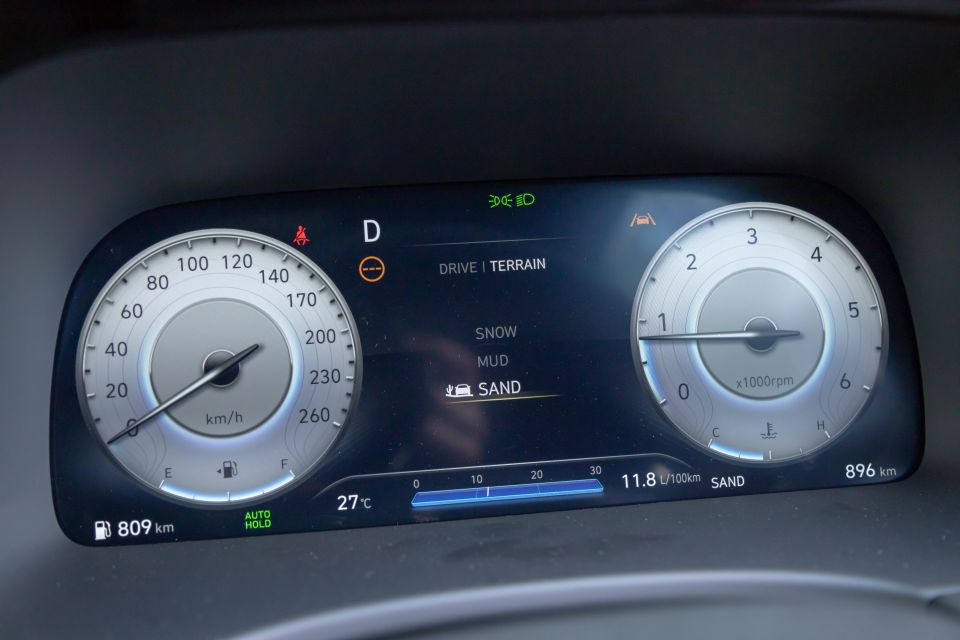
There’s also leather-accented trim on the doors, steering wheel and seats, with suede material on the seat inlays. Of course the front seats are heated and cooled, with electric adjustment as well.
One weird little thing is that the centre-airbag tag on the driver’s seat gets in the way a little bit if you move your arms around, or reach back to a child in the second-row.
You’ve got a pair of digital screens – the central one being for your infotainment or multimedia, and a driver’s info screen offering a heap of information at a glance. There’s a head-up display on the windscreen as well.
Going into a little bit more detail on the infotainment screen, it has layers of menus that you can enter if you want to spend a bit of time doing so, and some of the controls maybe aren’t as simple as they could be.

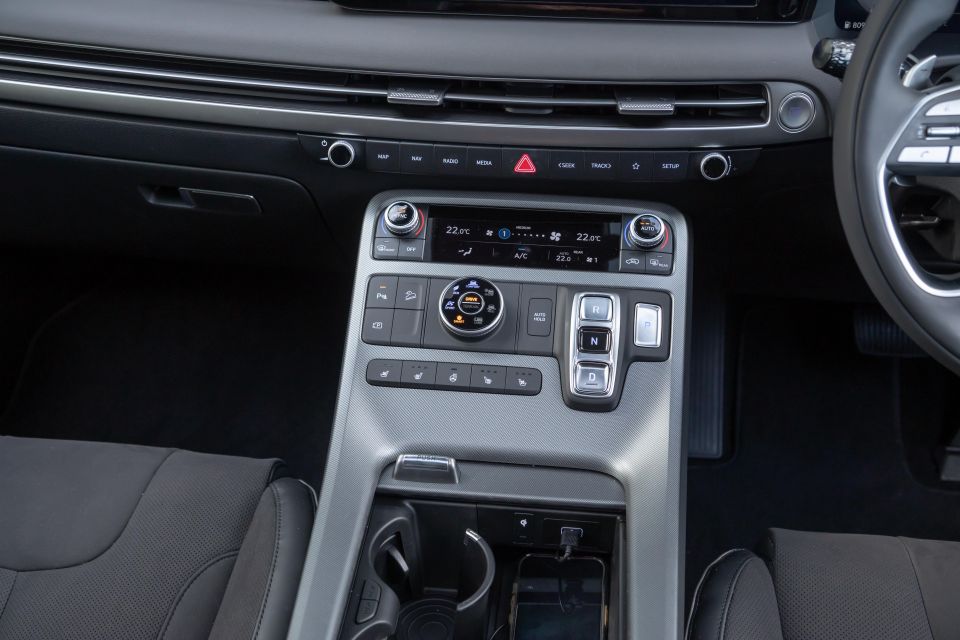
For instance, it’s not as easy to get into the safety settings to turn things off as it probably could be, and you can’t set up functions as a favourite button on the steering wheel either.
But you can get there using the steering wheel controls. You just need to learn the way to do it. And you will want to learn it, trust me.
Thankfully, there are buttons and dials for the volume and tuning down below the screen, and further down you’ll also find dials for temperature – but there is now a small touchscreen system for the fan speed and air conditioning controls and also for the rear ventilation controls too.
I don’t like that it’s a touchscreen, and it’s also pretty reflective so it can be hard to see what you’re doing at a glance while you’re driving.
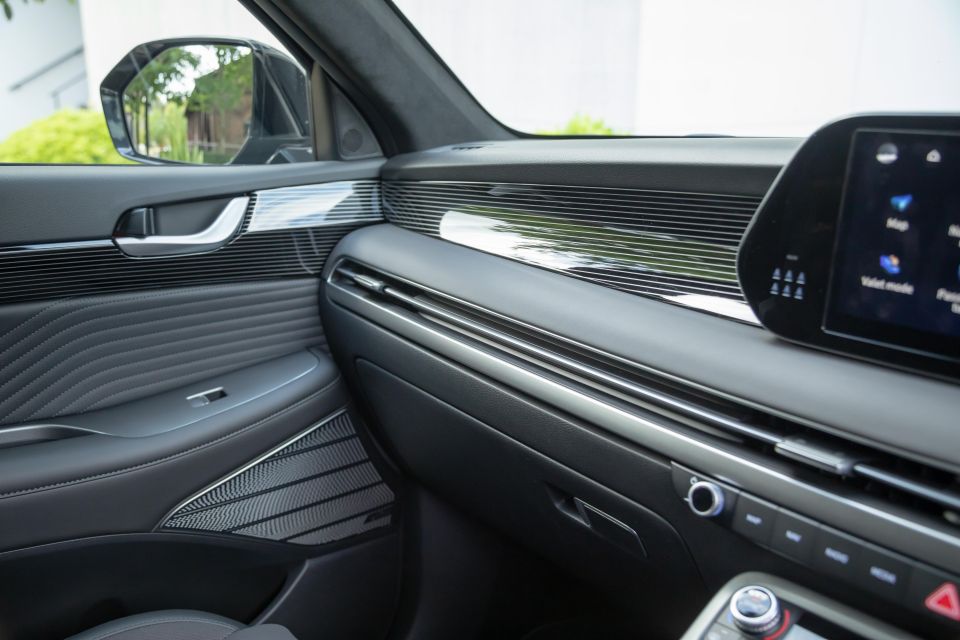
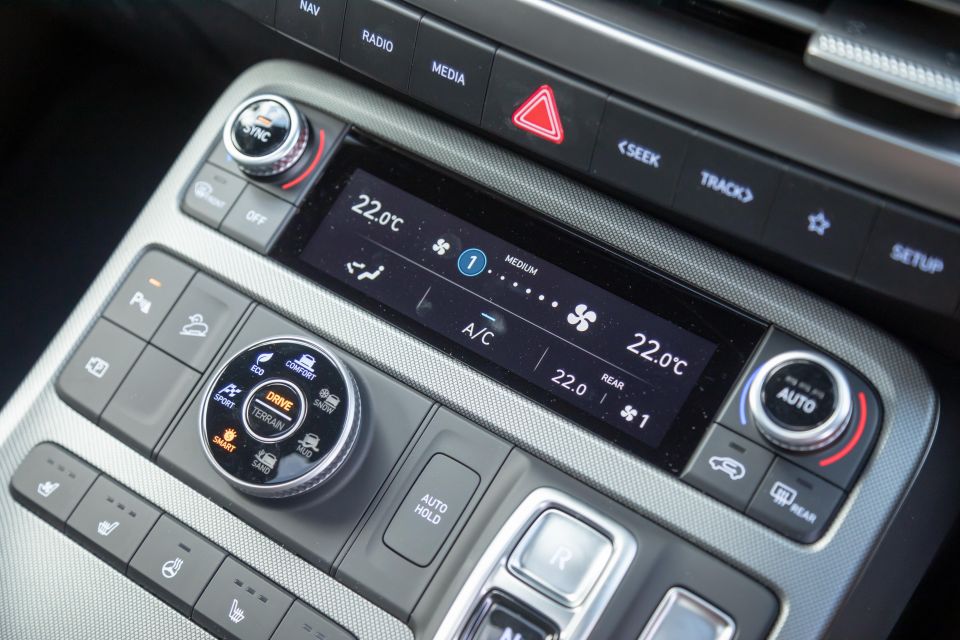
The centre console also houses the button-operated shift-by-wire transmission system, an auto-hold button, and a rotary dial controller for drive modes and terrain modes, as well. The drive modes are: Smart, Sport, Eco and Comfort. The three terrain modes are Snow, Mud and Sand.
There’s ample storage in the front row with a large centre console area, including two retractable cupholders, a wireless phone charging pad, and additional storage – as well as a big front-covered centre armrest with a USB and 12-volt plug. Plus, there’s another USB port ahead of that for your phone mirroring.
There’s also a massive storage tray underneath the bridge console area, which is handy for loose items. You also get a heated steering wheel in this spec as well.
A particular favourite of mine is the digital rear-view mirror, so you can switch to a video camera view from the rear of the car if you have the back seats full of faces.
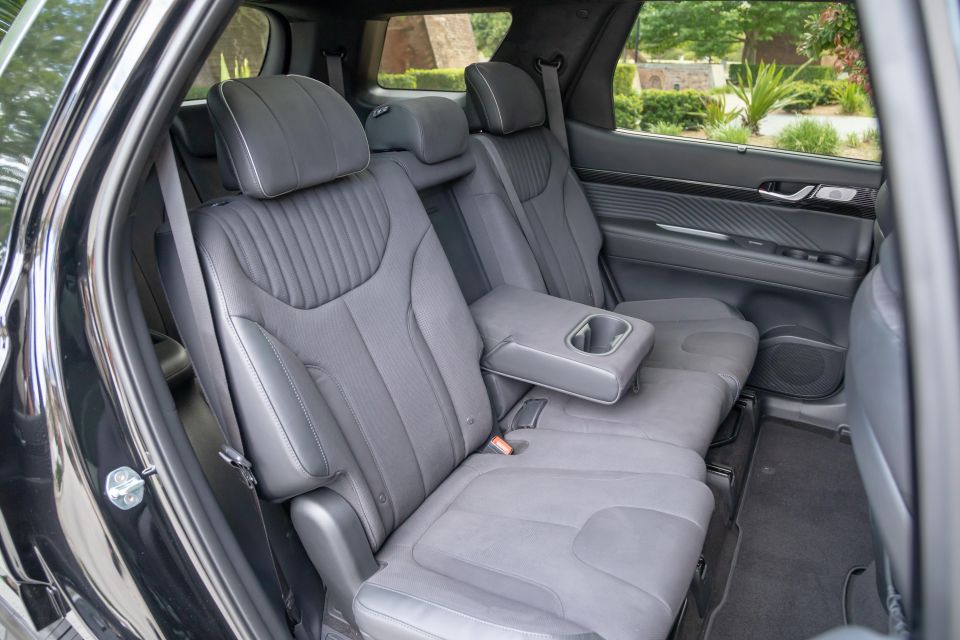
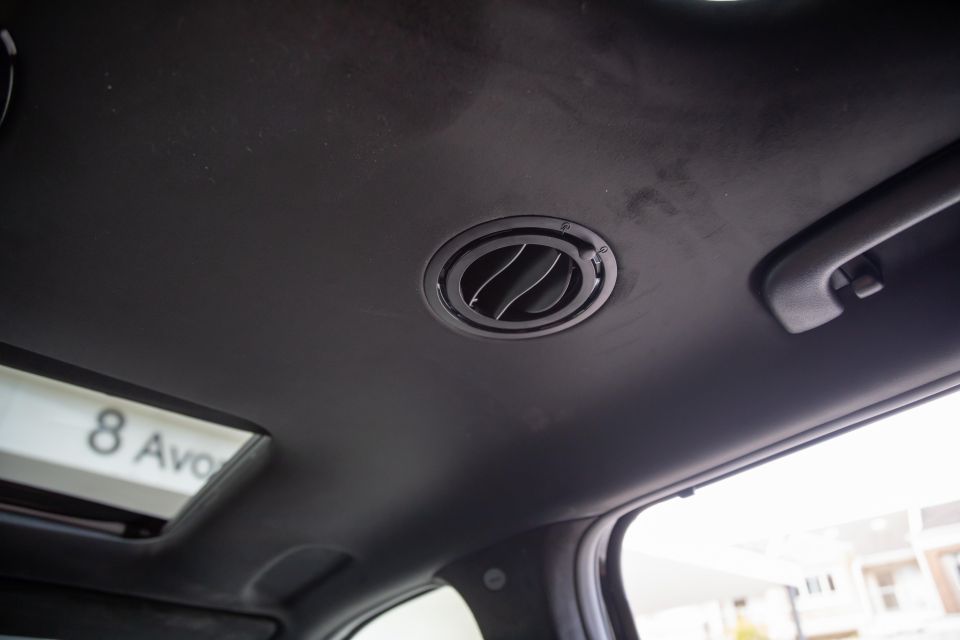
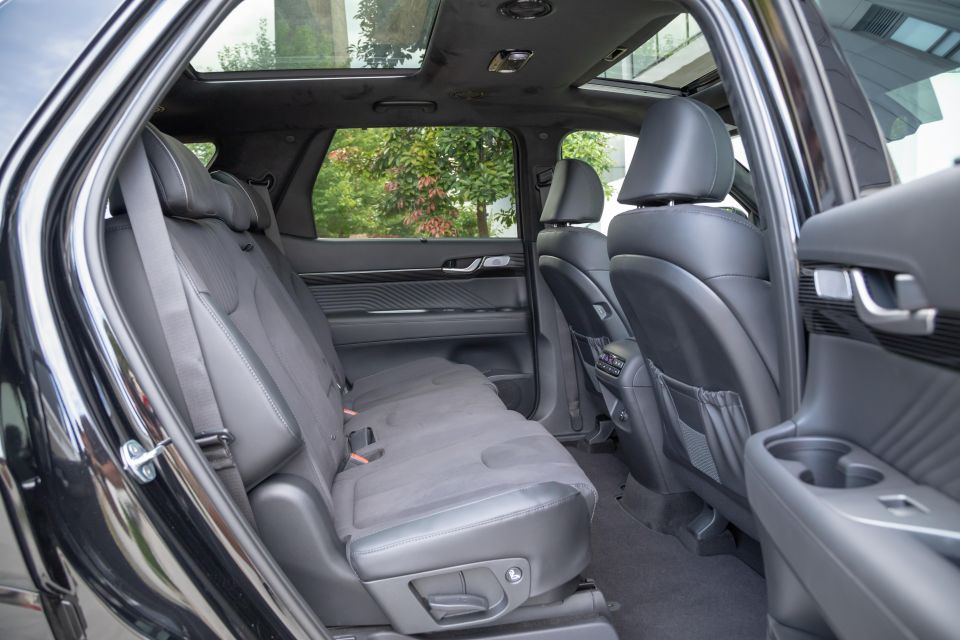

There are bottle holders in the front doors too. This car really nailed the brief when it comes to practicality upfront.
It’s also impressively practical in the second row. There are two cupholders in each door, USB-C ports and map pockets for both seatbacks, and a climate control panel with air-flow, temperature and seat heating/cooling buttons for the outboard second-row seats.
This row also scores sun-blinds, overhead ventilation, grab handles, lights, and there’s a sliding 60:40 split second-row seat to allow more third row space if required.
With the seat set to its most generous second-row position, there is enough space for me to sit behind my own driving position with ample leg, foot and headroom. The seat also offers recline functionality as well, and there’s a flip-down armrest with cupholders too.
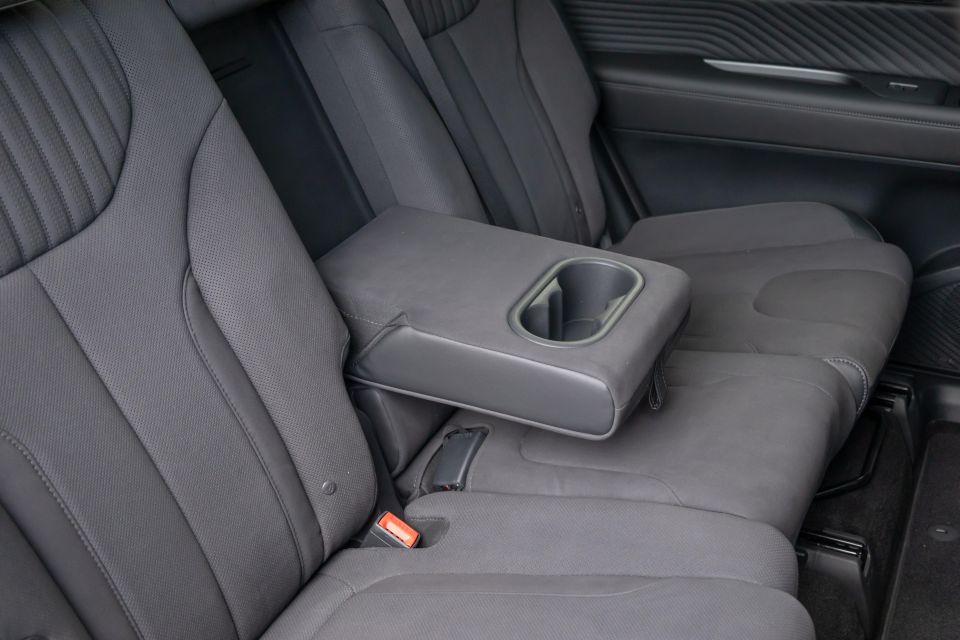
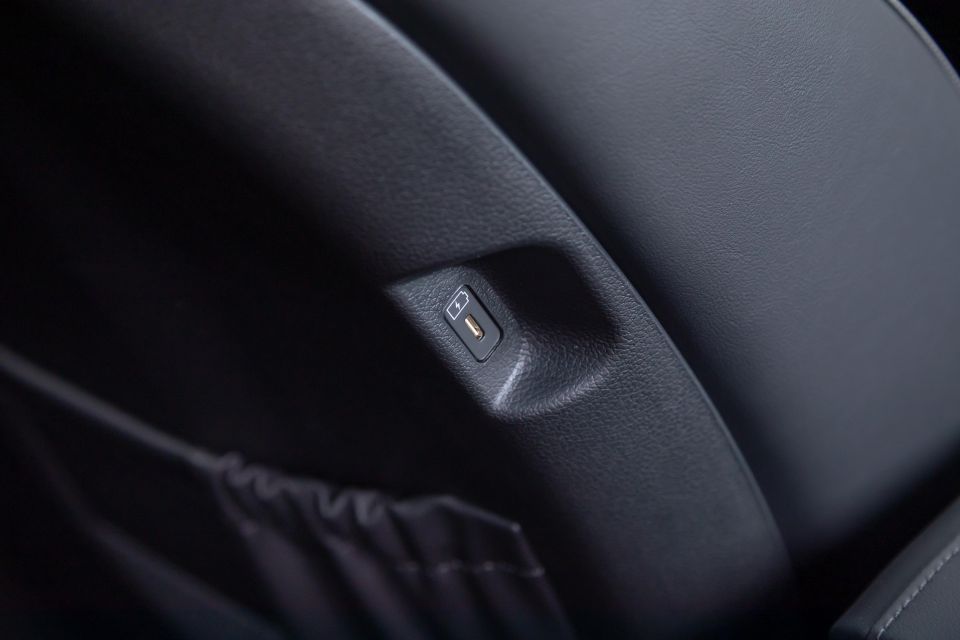
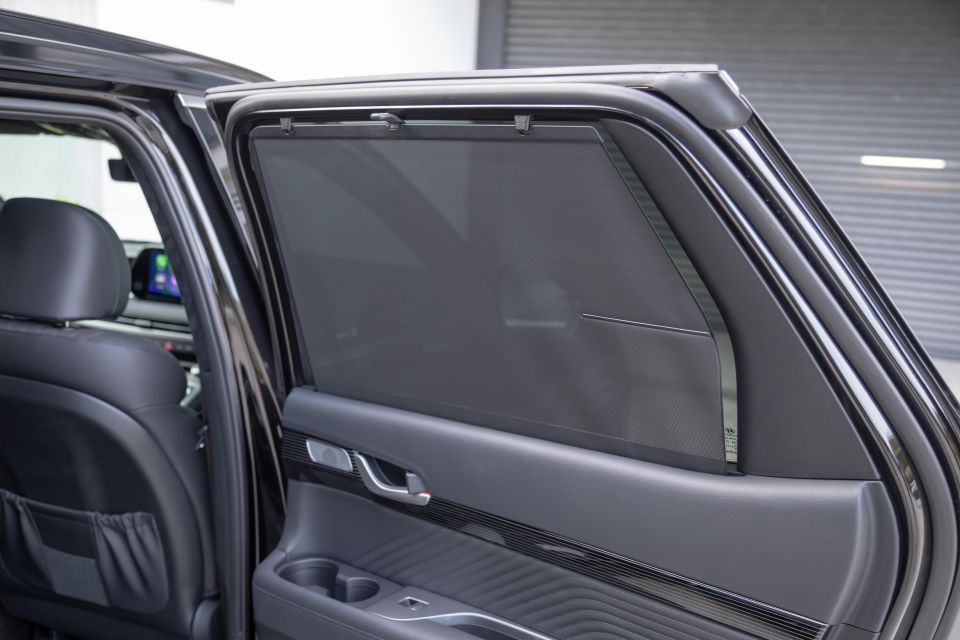
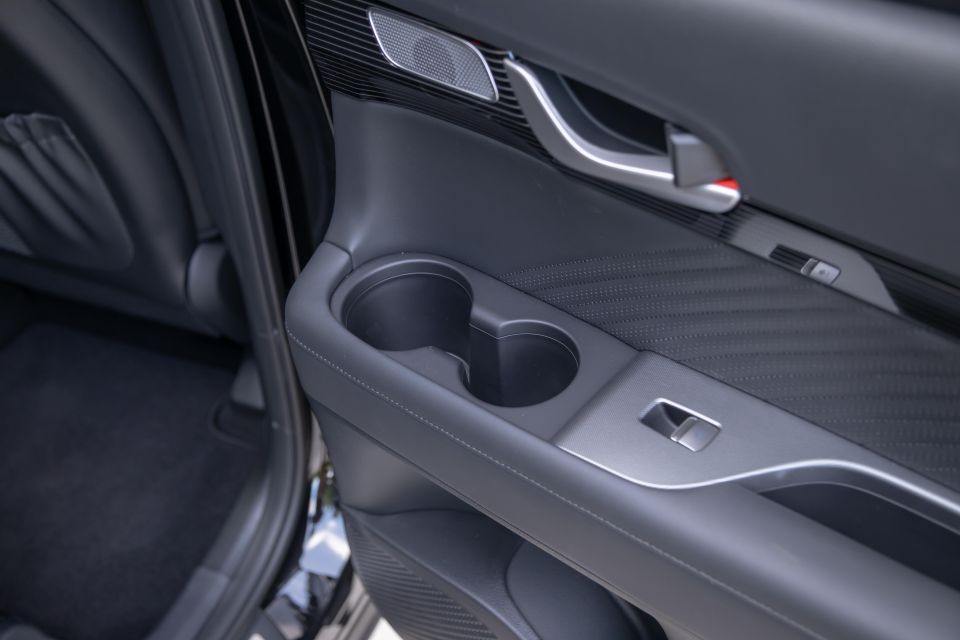
Finally, the second-row features ISOFIX points for the outer seats, and top-tether points for all three positions.
Okay, when it comes to third-row access, the smaller portion is on the roadside, which is always a bit perplexing to me… But it has a quick release trigger to tilt the seatback forward and slide the seat as far forward as it can.
There is heaps of room in the third row for an adult, even with someone their own size sitting in front. While the seating position is quite ‘knees-up’ the headroom available is good. There is enough space for two adults in the back, but three may be a squeeze.
If you plan to put kids right in the back, good luck to you, but there is an ISOFIX point for the very back passenger seat, while there are an additional two top-tethers in the third-row. Keep in mind the seatbelt for the middle third-row seat is housed in the ceiling, rather than from the seat itself (as is the case in the second-row).
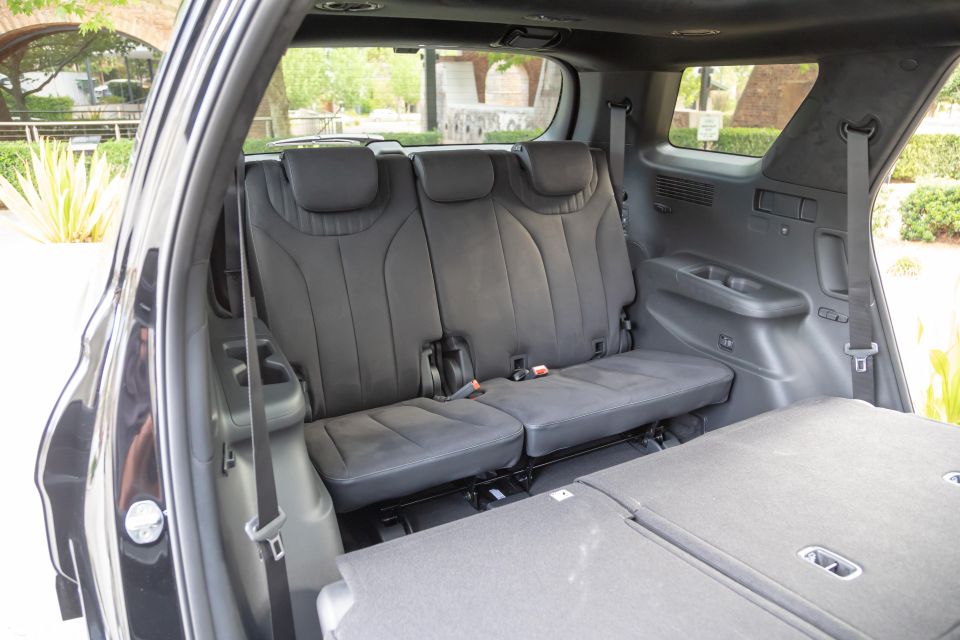
There are two more USB-C ports in the back row, four more cupholders, and there are also little integrated grab handles at the back of the C-pillar to allow easier ingress and egress to the very back row.
So, if you have lots of people to move, they’re well catered for – but what about all their stuff? Well, like most larger SUVs with three rows of real accommodation, the boot space is a bit limited when all the seats are in play.
Hyundai claims 311 litres of cargo space with the third-row up, and 704 litres with it down – so if you’re planning to use it primarily as a five-seater, it’s going to make more sense.
Even so, you can fit a folded-up pram with all the seats up, and you’ll fit a good number of shopping bags or backpacks in there too. For bigger trips just think about getting a towbar and trailer, or a roof-mounted cargo pod.
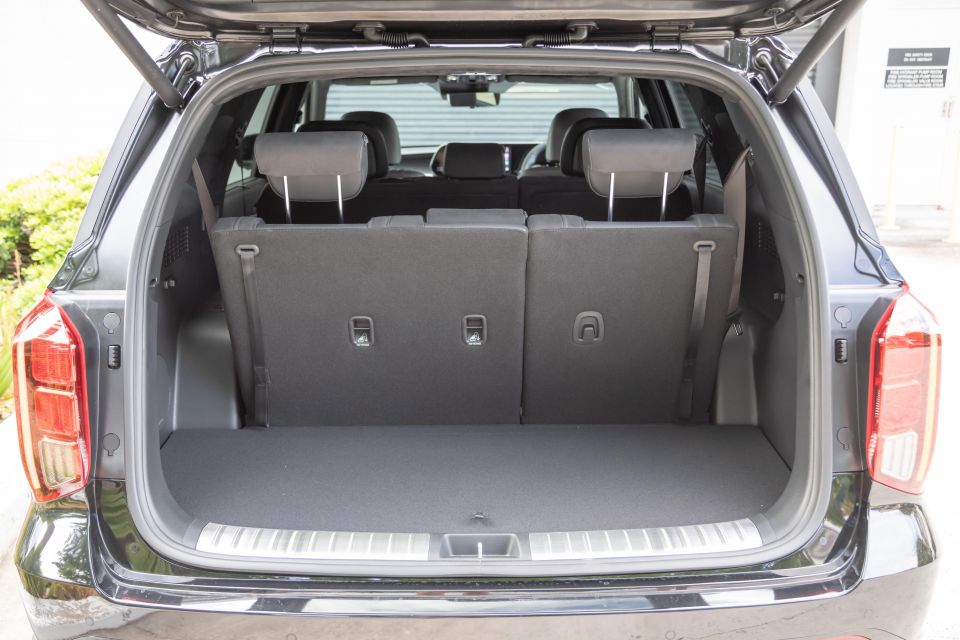
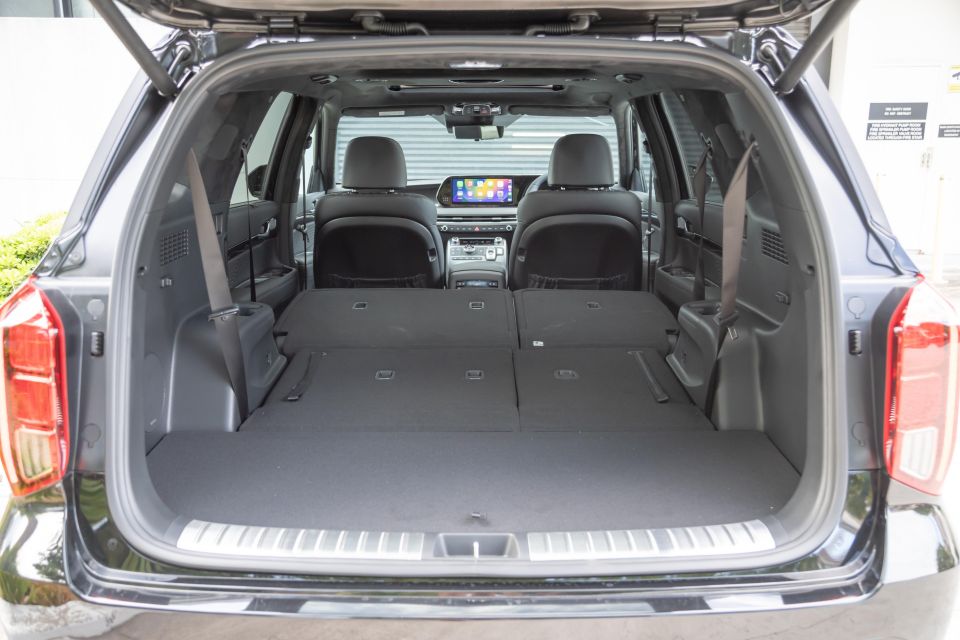
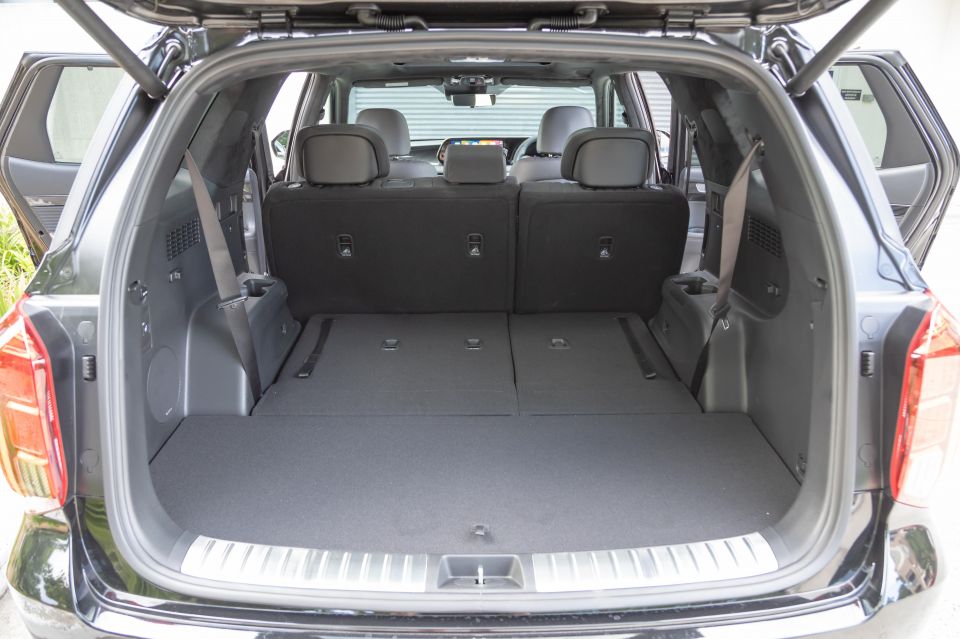
I love that this model features the smart boot system that allows you to walk behind the car with the key in your pocket and automatically open the boot for you hands-free – very handy for parents, and no awkward kicks under the tailgate that you’ll probably mess up.
While the newly added boot carpet mat is a nice thing to have, it’s designed for the car to be used as a five-seater, so mightn’t be much good if you plan to use all three rows all the time.
If you need to fold down the third-row seats they have velcro pull-tabs rather than handles (like some other cars) and they can fling out of reach when you drop the seats down. The second-row can be electronically folded flat by way of a couple of buttons mounted in the boot.
As already mentioned, there is a choice of two powertrains for all versions of the Palisade in Australia, with a $4000 price difference between them.
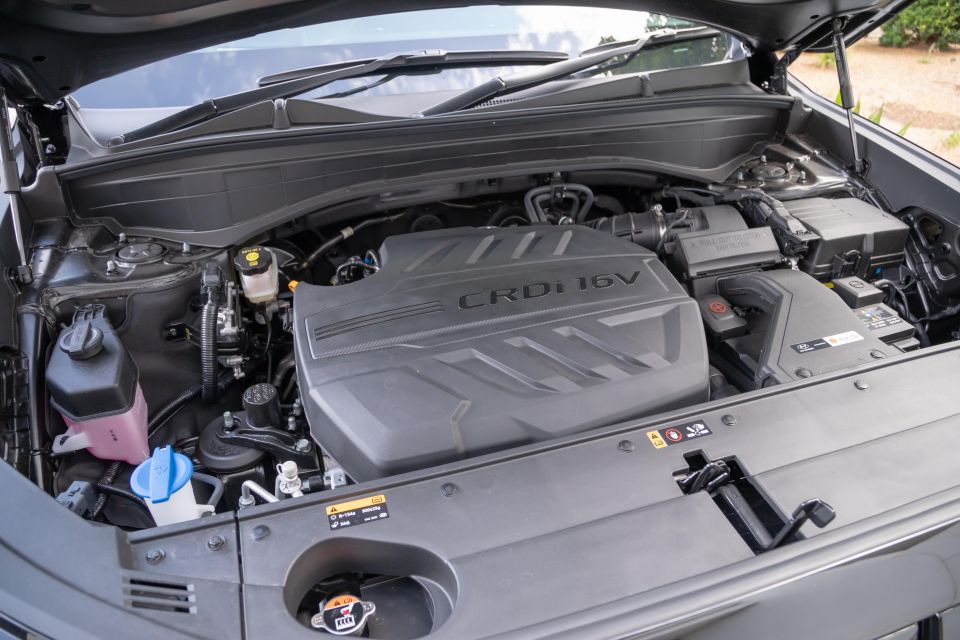
The cheaper choice is the petrol version, which employs a 3.8-litre naturally aspirated V6 producing 217kW of power and 355Nm of torque. It’s available only with front-wheel drive, and uses an eight-speed automatic transmission.
The other engine option – the one tested here, and the one I’d choose if I was buying a Palisade – is the 2.2-litre four-cylinder turbo-diesel, which churns out 147kW and 440Nm. It’s only available with all-wheel drive, and has an eight-speed auto.
No hybrids or plug-in hybrids here. Might have to wait for the next-gen model if that’s what you’re after.
If you plan to tow with your Palisade, note that both have unbraked towing capacity of 750kg and braked towing rated to 2200kg. The maximum towball down weight is 100kg, unless you choose the diesel and option the genuine towing kit, which bumps it up to 180kg.
The biggest disappointments with the drive experience in the Palisade are its safety systems.
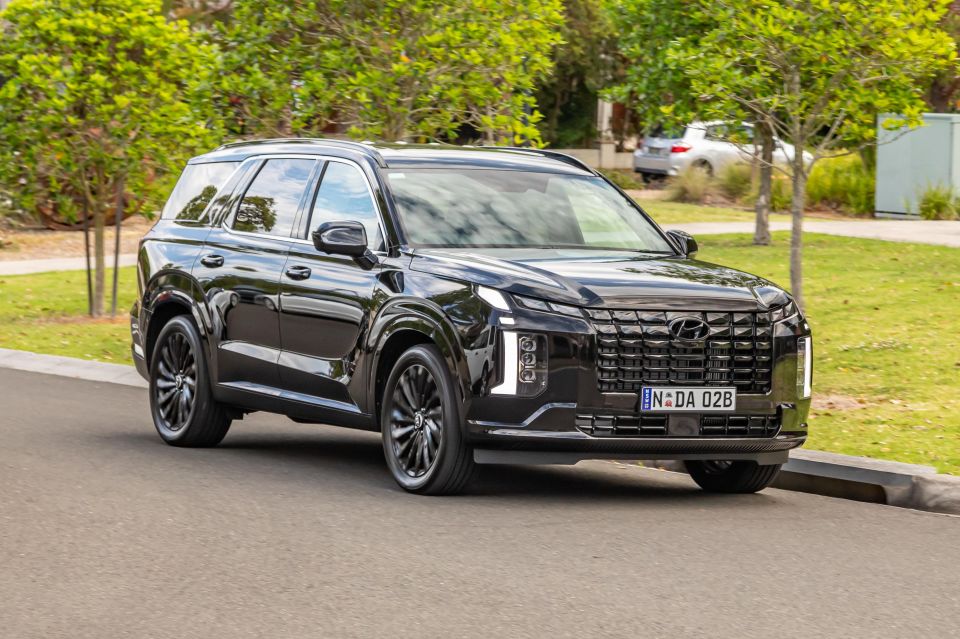
Where expert car reviews meet expert car buying – CarExpert gives you trusted advice, personalised service and real savings on your next new car.
The insistent speed sign recognition system – which you need to turn off every single time you drive the car (if you don’t like it) – is frustrating and often incorrect.
On a few occasions it read 70km/h when the speed limit was in fact 110km/h. It also cannot differentiate between speed signs for trucks and those for cars – meaning that on the hill near my house, which has a 60km/h zone for trucks and 90km/h zone for cars, it was insisting that I was doing 30km/h over the limit.
This is probably more of a homologation or traffic signage issue than it is Hyundai‘s fault, but it does show that you cannot rely on traffic sign recognition technology more generally. It also constantly beeps and bongs and really annoys you – my partner hated it as well.
Another annoying element that I switched off every single time I drove the Palisade is the lane keeping assistance. While it is better than in some older models, it does have a bit of an insistent feel to it, and not for any real good reason.
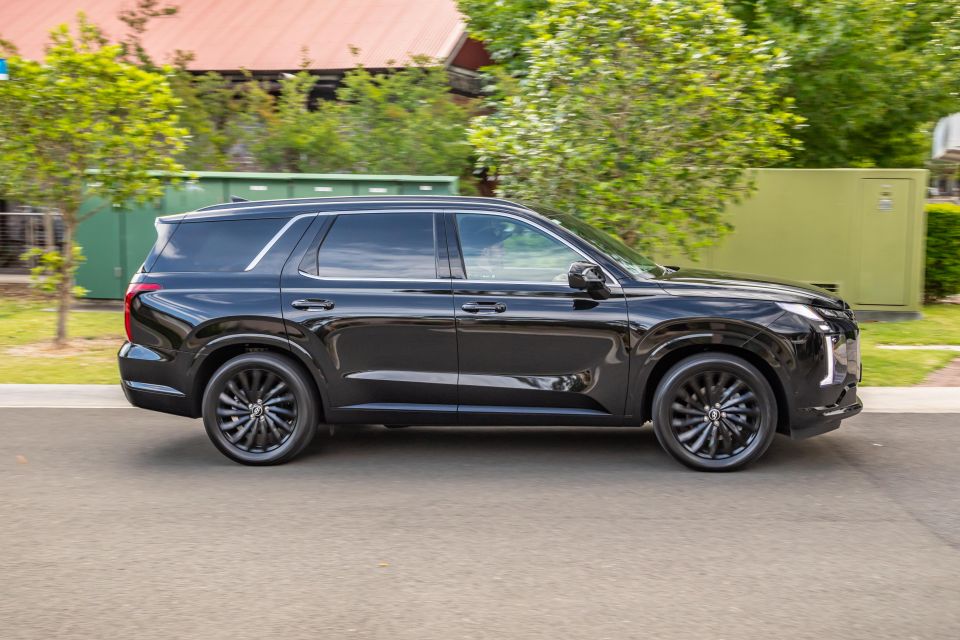
The drive experience is otherwise very good, which makes it doubly disappointing that these safety tech items could seriously undermine the drive experience for those who don’t like being bossed around by their car.
I found the steering had a nice, reassuring amount of feel and weight to it, being responsive and reliable at higher speeds. It was also reasonably easy to twirl the wheel at lower speeds and to know what will happen in roundabouts and the like.
The ride comfort was also quite good, with a cruisy feel to the way the car holds itself on the highway. The Palisade also does a pretty good job over lumps and bumps around town – though sharper edges do upset the body a little bit.
The engine is definitely adequate for this application, and indeed it has more grunt and refinement than some other bigger-capacity diesel vehicles that I’ve driven in similar situations. While 2.2L might not seem like a big enough engine for a vehicle this large, I reckon it does suit nicely.
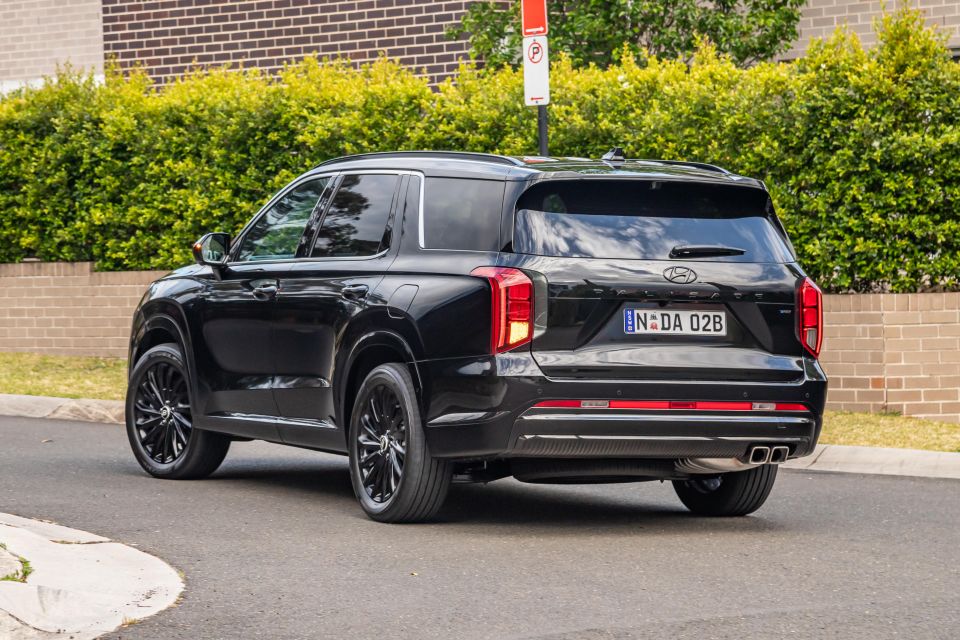
It also has a clever eight-speed automatic transmission which offers smooth shifts at higher speeds. While there is a little bit of turbo lag to contend with from a standstill, the gearbox does a good job when you’re going slower too.
The level of refinement and quietness is excellent. It feels as good as a luxury SUV for much more money in terms of cosseting occupants and doing away with road and wind noise.
The engine is commendably quiet, making for a very serene drive experience … until you load up the back seats with kids, or forget to turn off the bing-bong speed alert system.
Our detailed pricing and spec story can be found here if you want more info, but this is a rundown of what you get in each grade of the Palisade.
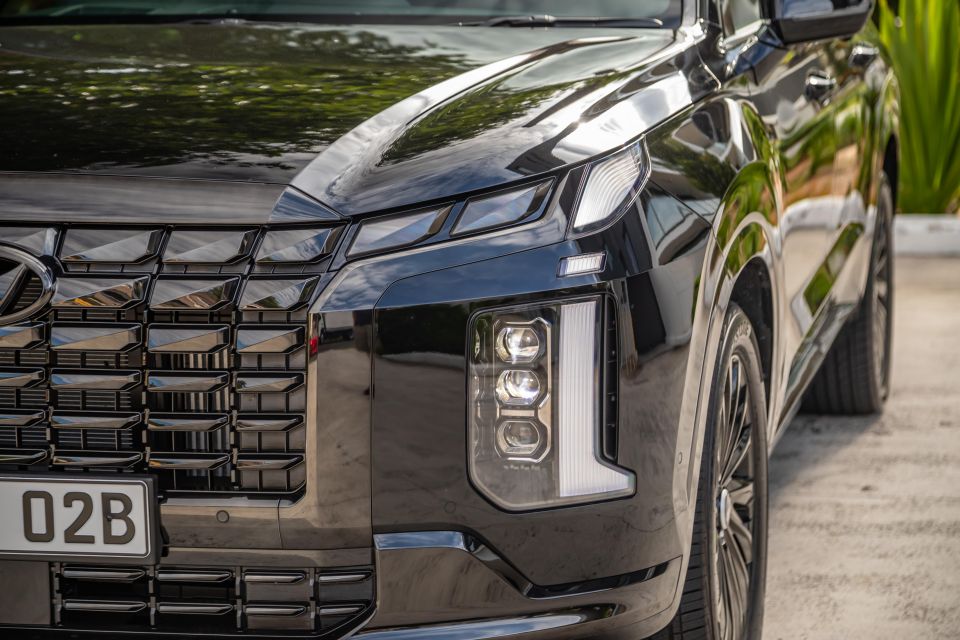
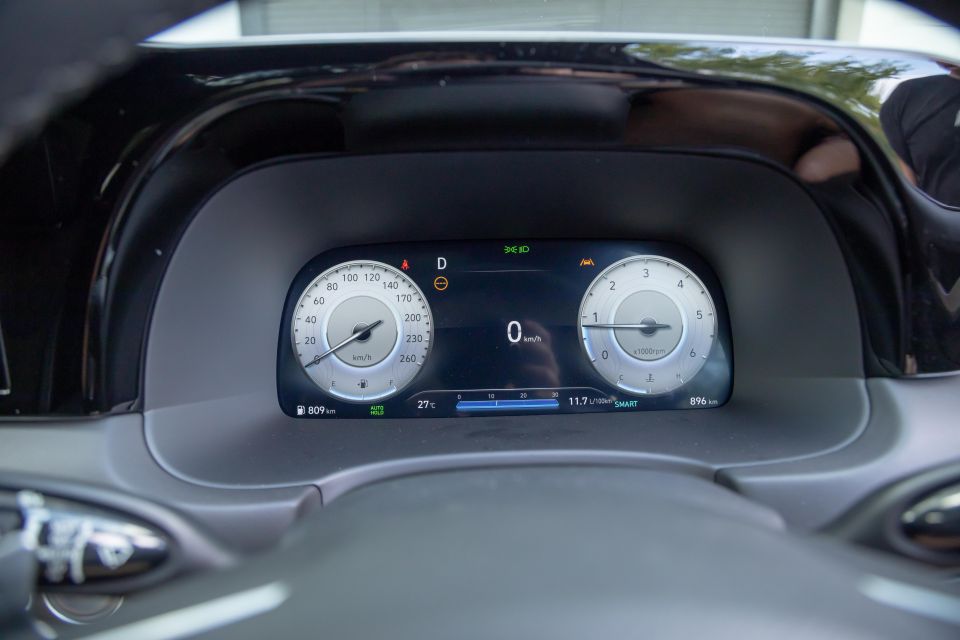
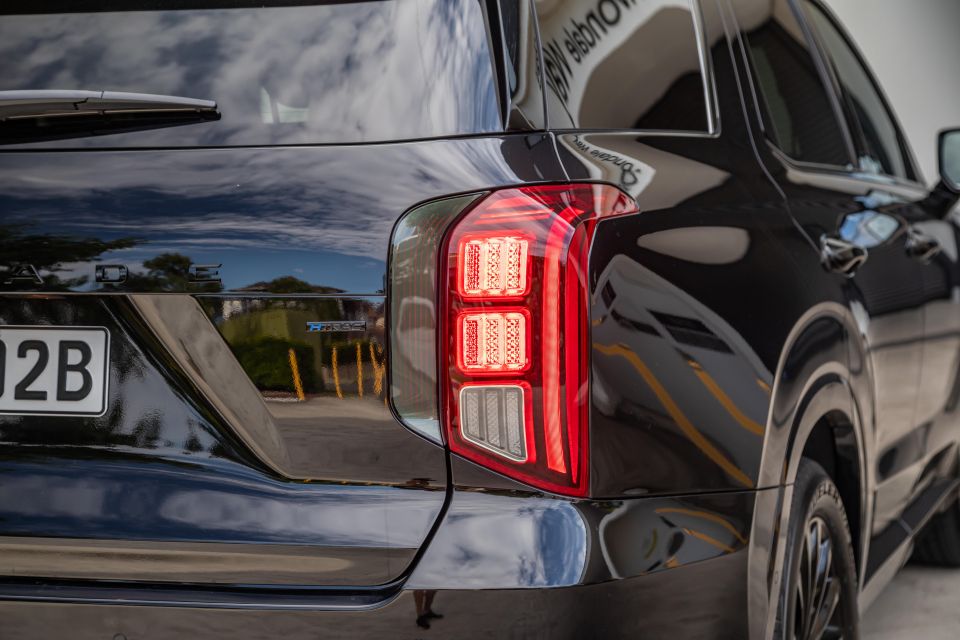

Palisade Elite highlights:
Palisade Calligraphy adds:
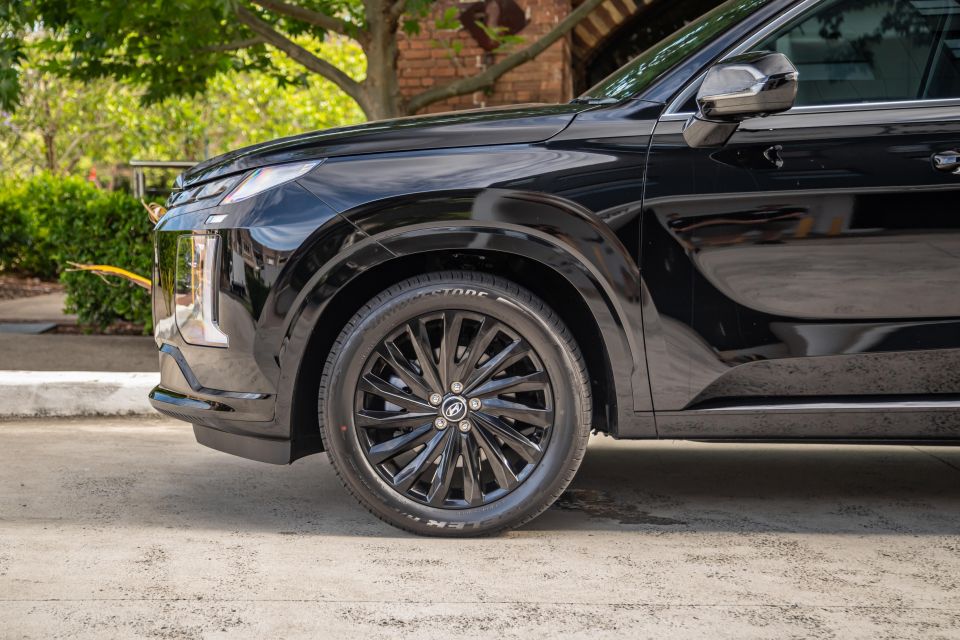

Palisade Calligraphy Black Ink adds:
The price increase to get into the Black Ink version is just $1000, but you get a fair few more features. It’s likely to come down to whether you want or need more full-finish leather trim. Parents, you’ll know that it’s infinitely easier to clean than suede!
The Palisade range wears an five-star ANCAP safety rating based on 2022 testing.
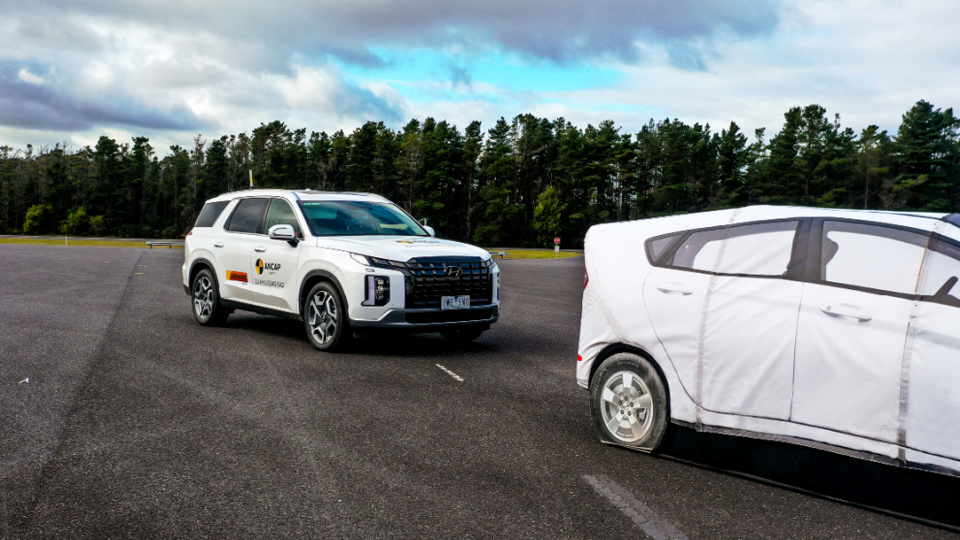
It received scores of 84 per cent for adult occupant protection, 88 per cent for child occupant protection, 62 per cent for vulnerable road user protection, and 83 per cent for safety assist.
Standard safety equipment includes:

Palisade Calligraphy adds:
The Palisade has seven airbags – dual front, front centre, front side and full-length curtain coverage, including third-row occupant protection.
If you choose the petrol model, the official combined fuel consumption number of 10.7 litres per 100km is likely to be more of a pipe-dream than a reality, unless you only do highway driving.
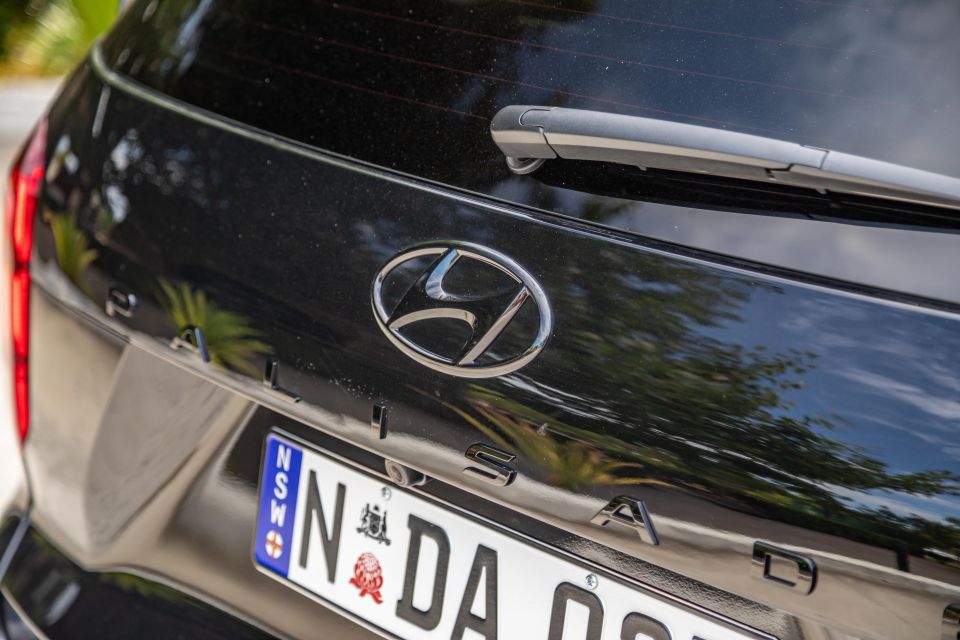
As for the diesel, the official figure for it is 7.3 litres per 100km. Again, likely if you’re a highway commuter, but not if you ask anything of the car in urban situations.
I did a mix of driving over a few days in the Palisade diesel, and my on-dash fuel use number was 9.3L/100km. And honestly, given it was a mix of urban, open road and freeway stuff, I think that is okay. Both petrol and diesel models have a 71-litre fuel tank capacity.
As for long-term ownership considerations, there is a five-year, unlimited kilometre warranty offered by Hyundai Australia, and customers also have a few choices when it comes to servicing.
The first is a prepaid maintenance plan, which you can opt for either three years/45,000km ($1377/$1467 petrol/diesel), four years/60,000km ($1836/$1956), or five years/75,000km ($2295/$2445). Or you can pay as you go, with a life-time capped-price servicing plan available for the entire Hyundai range.

There’s also a roadside assistance plan available for free for the life of the car if you maintain it within the Hyundai network of workshops.
And the brand includes up to 10 years of satellite navigation map updates, while the BlueLink connected services plan covers the first five years of data too.
The Hyundai Palisade is still a very family-friendly SUV, and offers unrivalled choice to buyers who are looking for a large SUV that offers plenty of standard specifications and space.
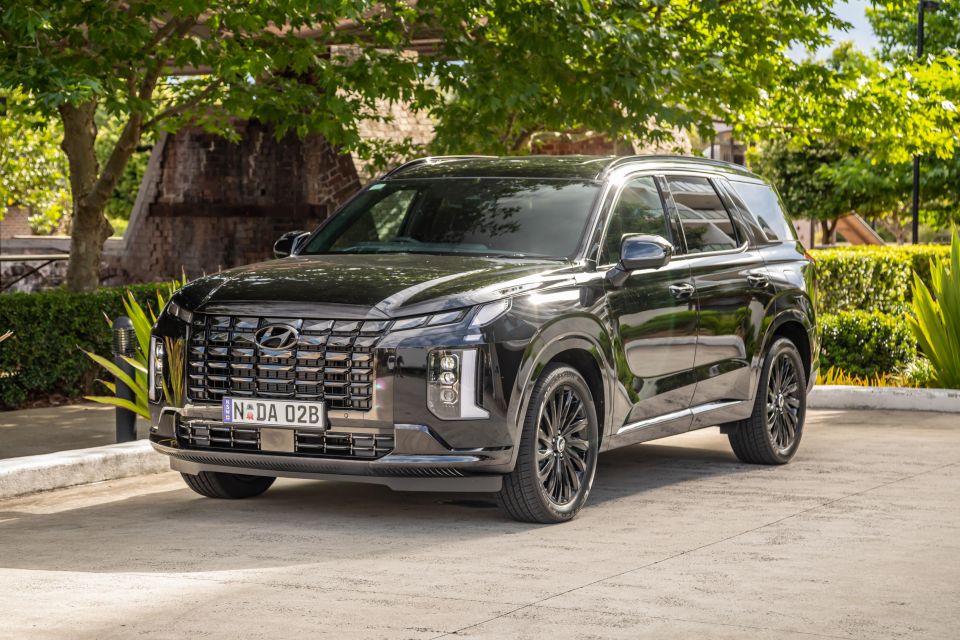
It would be an even better thing without that annoying speed-sign recognition technology.
Overall, there’s nothing else quite like it in our market for the same kind of coin, and it is a truly compelling choice for families after a large SUV.
Click the images for the full gallery
BUY: Hyundai Palisade MORE: Everything Hyundai Palisade
Where expert car reviews meet expert car buying – CarExpert gives you trusted advice, personalised service and real savings on your next new car.
Matt has more than a decade of experience in automotive journalism, and loves exploring the pros and cons of new cars, delving into deep-dive industry stories, and going for a drive just for the fun of it.


Damion Smy
1 Day Ago


Josh Nevett
4 Days Ago


CarExpert.com.au
5 Days Ago


Damion Smy
7 Days Ago


Derek Fung
7 Days Ago


Ben Zachariah
10 Days Ago